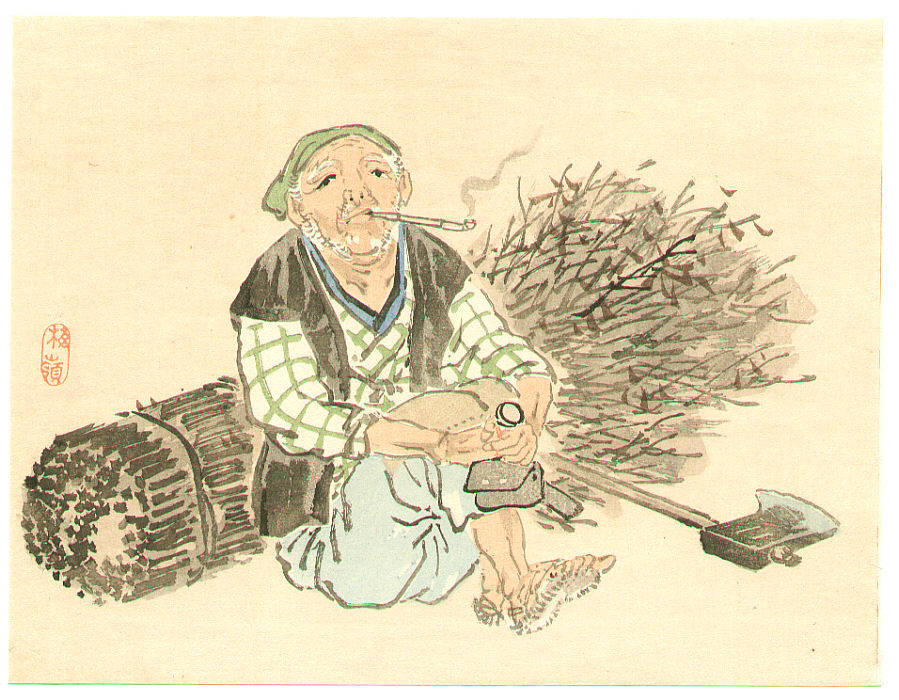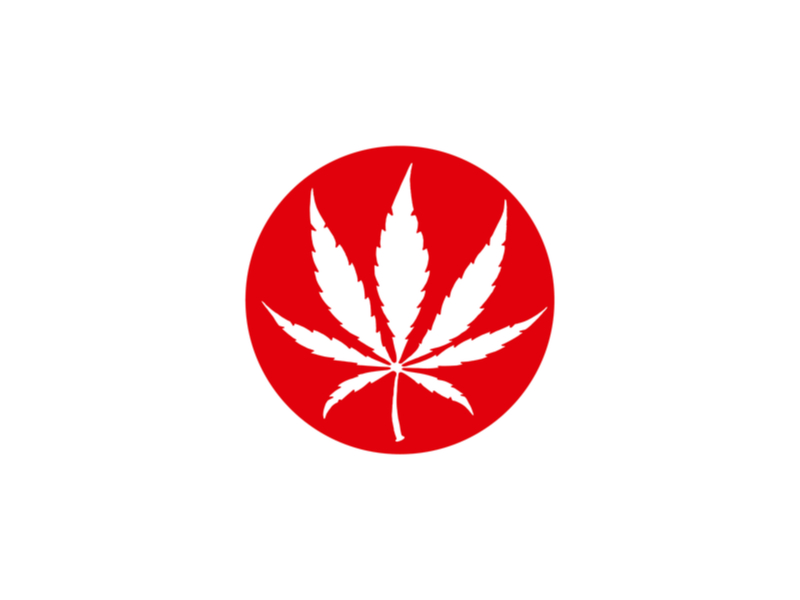Here are two statements. Guess which one is true.
In late 2020, a major Japanese newspaper reported that a man had been arrested for having a small white powder package of cannabis. No one in the editorial staff spotted a potential flaw in that statement.
After a Japanese pop idol was arrested in 2019 for having less than 3 grams of marijuana in his Tokyo apartment, his bail came to $28,000, contact with his live-in girlfriend was prohibited as per the bail conditions, and fans swarmed to his public apology in support of his mission to “get clean”.
I apologize, it’s a trick question. Both are true, and both are an indictment of Japan’s perception and overall understanding of cannabis in the 21st century.
Japan has one of the most draconian anti-cannabis legislations in the developed world: owners and growers face prison sentences of up to five and seven years, respectively – punishments equal to or exceeding that of embezzlement or assault. Furthermore, while Japan’s international peers are moving towards decriminalization and the probable legalization of cannabis, Japan is hightailing it in the opposite direction.
Japanese actor Yusuke Iseya smoked cannabis ‘to relax’: investigative sources https://t.co/LerQdloS21
— The Mainichi (Japan Daily News) (@themainichi) September 18, 2020
In light of a recent rise in cannabis-related offenses – a record 4,570 people were arrested in 2019; a 21.5% increase from the previous year – the government convened a panel of experts with the aim of strengthening the Cannabis Control Act. The panel will decide whether to criminalize the ingestion of cannabis (possession and cultivation are already outlawed), with a final decision expected by July 2021.
But what this zero-tolerance approach conceals is Japan’s deep historical connection to cannabis, a once prized cultural asset. Strengthening the Cannabis Control Act – believed by many to be a foregone conclusion – will serve to eradicate this important, and largely hidden, element of Japan’s history.
View this post on Instagram
The Plant That Defined a Civilization
Pictured in the Instagram post above is a pair of delicate ukiyo-e woodblock prints by Kyoto-based illustrator Kono Bairei, crafted around the turn of the 20th century. Both prints – from his Senshu no Hana (One Thousand Varieties of Flowers) collection – are typical of Japanese artistic refinement: simple, hand-colored depictions of a plant growing with vigor against a soft-wood background. The plant in question? Cannabis sativa.
That Bairei sought to honor cannabis in his works, however, was no trailblazing feat. In fact, the deeper one delves into Japan’s historical archives, the more indelible Japan’s relationship to the illicit plant becomes.
The first records of cannabis art in Japan date back to the Jomon Period (14,000 – 300 BC), an era spanning the stone, bronze, and iron ages. The Jomon Period was defined by disparate tribes of hunter-gatherers renowned for their pottery prowess and adept weaving abilities. A Jomon-era cave painting discovered in coastal Kyushu depicts a tall fibrous plant with distinctly cannabis-like leaves – the type you might see blazed across the front cover of a Bob Marley CD. Supporting this tantalizing circumstantial evidence, cannabis seeds and cannabis-laced woven fibers were discovered inside Jomon pottery relics in Fukui Prefecture 500-plus-miles away. Given the sheer distance between the locations, it’s safe to assume cannabis use wasn’t restricted to one subset of the population.
Cave painting of hemp being brought to Japan carbon-dated dated 5,500 BCE!#cbd #cannabis #hemp #cbdoil #hempoil #organic #health #wellness #cannabidiol #CBG #CBN #THCV #cannabisresearch #endocannabinoidsystem #CB1 #CB2 #ECS #historyofhempjapan #hempsails #hemprope #hempseed pic.twitter.com/Y61wAO6s8l
— Fremont Botanicals (@FremontCBD) February 11, 2020
But rather than being a common recreational medicant, experts believe cannabis was primarily used to make clothing, geta straps, fishing rods, and bowstrings. One could argue cannabis was as culturally significant to the Jomon tribes as clay to the ancient Mesopotamians, as papyrus to the Egyptians, or animal hides to the pre-colonial Cherokee.
The first example of cannabis in written work came just a few hundred years later, around the time Japan adopted China’s kanji script. The Manyoshu, meaning “Collection of Ten Thousand Leaves”, is a compilation of Japanese waka poetry featuring poems and haiku written between AD 600 and 759. Of the 150 species of plants mentioned in the collection, cannabis too merited an inclusion.
Cannabis also bled into the customs of Japan’s ancient polytheistic belief systems. Shinto priests were known to use bundles of it to exorcise demons, while pilgrims often placed cannabis at roadside shines as a votive offering. During obon, Japan’s festival of the dead, families burnt cannabis by the entrance of their homes as an invitation to their ancestral spirits. Even today, it’s still common to see cannabis fibers used as bell ropes at shrines and adorning the bulbous midsections of yokozuna (high-ranking sumo wrestlers) – fields in Nagano and Tochigi Prefectures and across the island of Shikoku are designated for growing cannabis for such purposes.
Since it’s 4/20, here’s Asamiko-chan the hemp fairy, mascot for a traditional cannabis farm in Tottori Prefecture, Japan. (The hemp is used for rope, oils, etc., not smoking). pic.twitter.com/7IWXQjF1Y4
— Mondo Mascots (@mondomascots) April 20, 2020
Did Anyone Smoke Cannabis?
The ubiquity of cannabis in ancient Japan begs the question: did people smoke it? Frankly, the evidence is inconclusive. But we can look elsewhere for clues.
In his recent book, The Immortality Key, Brian Muraresku sets forth the first hard scientific data supporting the use of psychedelic substances in ancient religious rituals, showing how mind-altering plants may have influenced the very foundation of Christianity. In his seminal essay, “Do Drugs Have Religious Import?” the late, great historian Huston Smith wrote of the influence of psychoactive substances on the Vedic tradition, the Eleusinian mysteries, and the Peyote Church.
In Hindusim, bhang, a cannabis-infused drink, was (and still is) drunk at festivals to cleanse sins and to unite the imbiber with Shiva. Cannabis was also an element of traditional Chinese medicine for as long as 5,000 years. Meanwhile, the Amazonians have been traveling through interdimensional mind-orbit via ayahuasca for the last millennium.

“Old woodcutter smoking tobacco”. Ukiyo-e art from the late 19th century, by Kono Bairei. Photo from ukiyo-e.org
Indeed, applying the Occam’s Razor logic to Japan is guesswork. But I’ll make an assumption: if the Shinto priests of antiquity decided to fumigate a shrine hall with high-potency cannabis, it would be only a matter of time before members of the congregation started seeing the face of God. The weed certainly had enough of a kick. In a survey of the THC content (the psychoactive chemical) of indigenous Japanese cannabis, strains from Tochigi and Hokkaido contained 3.9% and 3.4% THC, respectively. (For purposes of distinction, cannabis with a THC content over 0.3% is classified as marijuana – “enough to get you high” – while less than 0.3% is classified as hemp.)
On the whole, Japanese society isn’t willing to entertain such contentions. But the conservative attitudes towards cannabis are a relatively recent adoption.
The Original War on Drugs in Japan
Following the Second World War, the US military exerted control over Japan for close to seven years. Among the new legislations penned during this period of occupation was the Cannabis Control Act of 1948, which is still in effect today.
In the early 1940s, Japanese farmers were encouraged to plant cannabis as a matter of civic duty: fibers were used in producing ropes for the imperial navy and parachute cords for the air force.
Following Japan’s surrender, however, the US applied conservative western values to cannabis production, outlawing both possession and growth of the plant. Incidentally, the new law also coincided with the US ramping up cotton and synthetic fiber exports, both of which were profitable alternatives.
I took this photo at the 大麻博物館 in Tochigi. At the end of WWII, GHQ made hemp illegal in Japan – the US didn’t want competition for its textiles makers. The photo shows the Emperor visiting hemp farmers offering condolences. pic.twitter.com/sjDE26lzHq
— SF (@SFFANINTOKYO) July 17, 2020
Despite minor revisions over the subsequent 70-plus years, the core precepts of the 1948 law remain in place. A continued propaganda war has been simultaneously waged on cannabis, further stigmatizing its use. The result is that a crop once erupting from soils all across the archipelago, is now confined to a few scattered patches of land under strict government ordinance.
The Future of Japanese Cannabis
The outlook for cannabis in Japan is bleak. Under the current laws, cannabis research even for medical purposes is not permitted. And though CBD, the non-psychoactive chemical in the plant, is gaining traction as a hipster cure-all, cannabis is set to become further delegitimized in the coming months.
However, there are people making a stand. Junichi Takayasu, proprietor of the Taima Butsukan (Japan’s only cannabis museum) in Tochigi Prefecture, is a vocal advocate for cannabis as an intangible element of agricultural heritage. The Hokkaido Industrial Hemp Association, established in 2013 to promote the importance of hemp, penned a letter to the government stating its disapproval of the recent move to strengthen the anti-cannabis legislation. While the folks at Green Zone Japan, an NGO which disseminates information on the medicinal and beneficial effects of cannabis, have been arguing for a more liberal approach since 2017.
Cannabis is inextricable from Japan’s rich cultural heritage. Only by acknowledging this past, can cannabis become a part of its long-term future. It remains to be seen whether this will be possible in a society that has disconnected from parts of its history.









